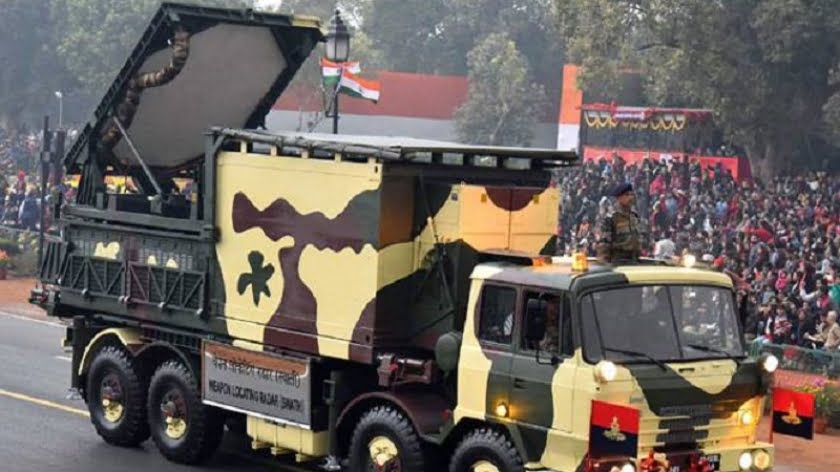India’s $40 Million Inroad Into Armenia’s Russian Arms Market Is Intriguing
India’s success in scoring a $40 million weapon-locating radar deal with Armenia is an intriguing development because the South Asian state surprisingly beat out a Russian competitor despite Moscow being the landlocked South Caucasian country’s CSTO mutual defense ally and provider of the vast majority of its military equipment.
***
Armenia Chooses India Over Russia
India achieved a surprise victory over Russia earlier this month after it beat out the latter in scoring a $40 million weapon-locating radar deal with Armenia. This was an intriguing development considering that Moscow is the landlocked South Caucasian country’s CSTO mutual defense ally and provider of the vast majority of its military equipment, which is why some observers were so taken off guard by Yerevan’s decision. In hindsight, however, it makes sense why Armenia preferred to go with a new Indian partner instead of its traditional Russian one. The nationalist post-Color Revolution government of Prime Minister Pashinyan has wanted to gradually reduce Armenia’s overall dependence on Russia since entering into power two years ago, though it’s had tremendous difficulties in doing so for simple geographic reasons. Instead, it found itself compelled to strengthen ties with its traditional partner out of pragmatic necessity that obviously overrode any nationalist-ideological considerations, but that didn’t mean that it abandoned its grand strategic intentions and wouldn’t ever seek to advance them if given the opportunity.
Russia’s “Balancing Act” & “Military Diplomacy”
Such a chance arose when the country was looking to modernize its radar equipment, during which time Indian, Polish, and Russian companies made bids for this lucrative contact. Although media reports indicate that the decision was made to go with Indian wares for apolitical reasons simply related to Yerevan’s preference for that specific equipment, it can’t be excluded that unspoken political considerations were also involved as well. Russia’s de-facto strategic partnership with Turkey alarms many in Armenia who don’t understand the finer nuances of Moscow’s “balancing” strategy, nor its related “military diplomacy” in arming their Azerbaijani rival. About the first-mentioned, the author explained the motivations behind Moscow’s regional strategy in his piece about “The Mideast’s Place In Russia’s Greater Eurasian Partnership“, whereas the second point is countered by the claim that Russia believes that reinforcing military parity between rival pairs in any conflict improves the likelihood that they’ll resort to political solutions to their disputes, unlike the US’ policy of explicitly supporting one side over the other in order to increase the chances of a war breaking out to the benefit of its proxy.
Armenia’s Strategic Calculations Against Azerbaijan
Because Armenia either doesn’t understand Russia’s strategy or believes that this approach isn’t to its zero-sum grand strategic benefit, the country doesn’t feel entirely confident that Moscow will honor its mutual defense obligations under the CSTO in the event of another hot war over the internationally recognized Azerbaijani region of Nagorno-Karabakh that Yerevan’s armed forces have been illegally occupying for over the past two decades. The arguments of Armenia and the disputed region’s majority-Armenian population are irrelevant in this strategic context because all that’s pertinent is that Russia’s CSTO obligations do not extend beyond its South Caucasian partner’s internationally recognized borders, meaning that Moscow would only prospectively intervene in the event that Azerbaijan and/or its Turkish ally took a possible Continuation War into that country’s territory. Armenia would prefer to keep the fight inside Azerbaijan’s internationally recognized territory, however, thus rendering the speculative scenario of a Russian military intervention in its support unrealistic unless its nationhood was credibly endangered.
A Preemptive Defense From Speculative Russian “Hacking”?
This strategic calculation makes Armenian decision makers extremely uncomfortable, hence one of the reasons why they’ve sought to diversify their military and other partnerships as much as possible over the past two years. They didn’t have much success because their geographic location greatly limits the support that other nations such as those in NATO could ever provide to it during times of crisis, but acquiring non-Russian military equipment from what is ironically Russia’s largest arms partner represents a gradual step in this direction, especially since it’s unclear whether the weapon-locating radars that India is going to provide will ever be integrated into Armenia’s Russian-acquired military “ecosystem”. This is important point to dwell on because it could say a lot about Armenian anxieties. If the Indian radars aren’t connected to its other systems, then they could theoretically operate autonomously, and any speculative “hacking” that the most nationalist forces in Armenia might fear that Russia could do during a war to turn the tide in favor of Azerbaijan and Turkey would be rendered null and void, or at least mitigated to a greater extent than if their equipment was solely Russian.
Indian Interests
In addition, there could be yet another layer of political intrigue involved too. Indian-Turkish relations are presently in a state of diplomatic crisis over the latter’s vehement opposition to last August’s de-facto annexation of the UNSC-recognized disputed territory of Jammu & Kashmir by the occupying South Asian state’s “Hindu nationalist” authorities, so New Delhi has an interest in “poking its fingers in Ankara’s eyes” by providing Yerevan with non-Russian weapon-locating radars that could come in handy in the event of a Continuation War with Turkey’s Azerbaijani ally, especially since this deal reduces the chances that Russia could speculatively “hack” those systems to its Muslim partners’ advantage per the author’s explanation in the preceding paragraph. Furthermore, seeing as how India is drastically reducing its own military dependence on Russia after the Stockholm International Peace Research Institute (SIPRI) revealed last year that its purchase of military equipment from Moscow dropped a whopping 42% over the past decade, New Delhi might be trying to position itself as an alternative military provider to other countries in similar positions of strategic dependence.
Concluding Thoughts
Armenia’s decision to purchase $40 million worth of weapon-locating radars from India instead of Russia is very likely the result of its failure to properly understand and appreciate Moscow’s carefully coordinated “military diplomacy” with Azerbaijan which forms an integral part of its broader “balancing” strategy. The prevailing misperceptions about Russia’s general intentions towards their country are responsible for the post-Color Revolution nationalist Armenian elite’s policy of “diversifying” as much away from Moscow as is realistically possible, which has thus far mostly failed to materialize in any significant way whatsoever but finally found a chance to symbolically take the form of their latest military deal with India. It’s too soon to tell whether this represents the beginning of a larger trend whereby newly pro-American India positions itself as a supposedly “friendly” “balancing” force to Russia in the post-Soviet space among those countries that also endeavor to reduce their strategic dependence on Moscow, but this intriguing development is certainly worth monitoring just in case it isn’t the purely apolitical move that it’s being portrayed as.
By Andrew Korybko
Source: One World







